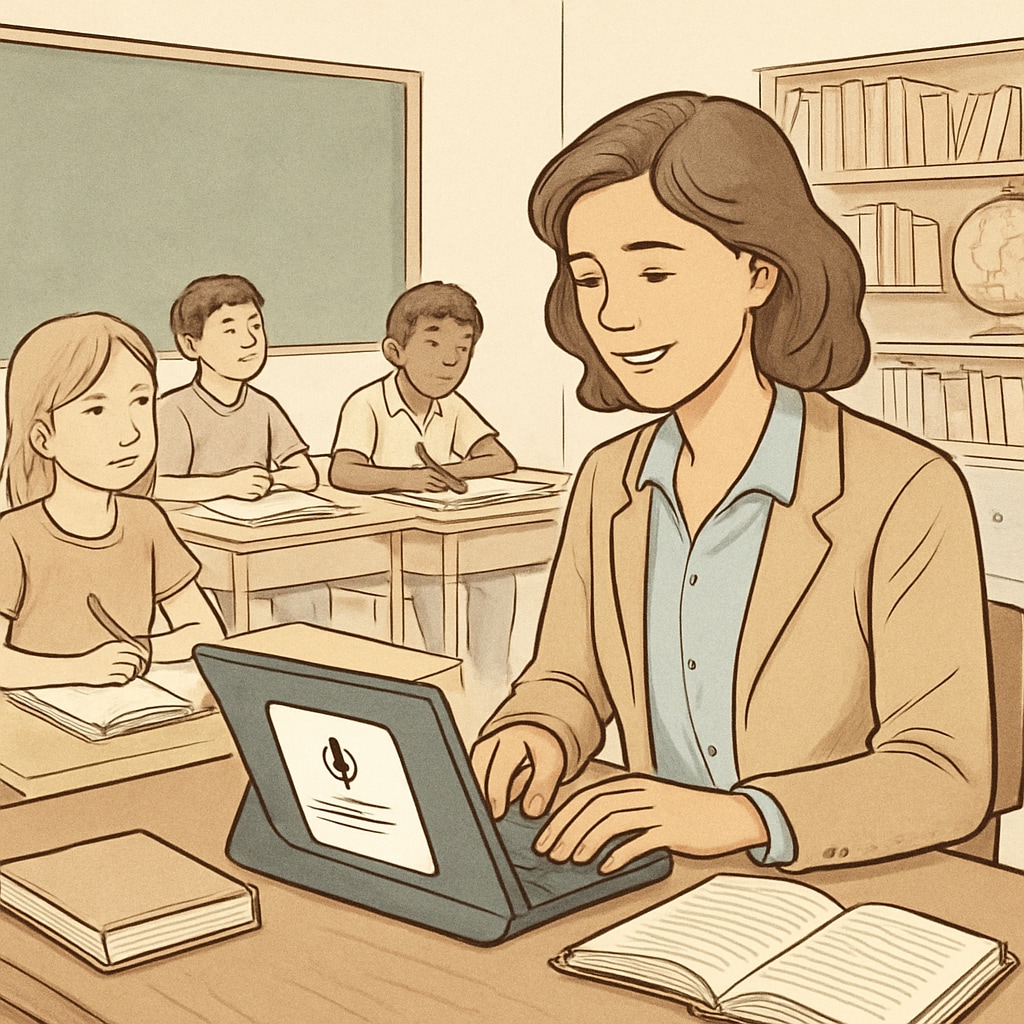Voice-to-text technology, teacher workflows, WillowVoice, and teaching feedback have become crucial tools for educators looking to reduce their administrative burdens and focus on delivering high-quality education. With the development of advanced voice recognition tools like WillowVoice, K12 teachers can streamline their documentation processes, freeing up time for what truly matters—engaging with students and fostering learning.
How Voice-to-Text Technology Reduces Administrative Work
Administrative tasks such as grading, lesson planning, and providing feedback often consume significant amounts of time for teachers. Voice-to-text technology offers a practical solution by allowing educators to dictate notes, feedback, and reports directly into their devices, transforming speech into accurate written text within seconds. Tools like WillowVoice stand out due to their ability to recognize complex academic terminology, ensuring that even technical subjects are transcribed correctly.
For example, a teacher reviewing student assignments can dictate feedback using WillowVoice while simultaneously checking the work. This eliminates the need to manually type out lengthy comments, saving time and reducing repetitive strain. Additionally, teachers can use the tool to quickly generate lesson plans or share notes with colleagues, streamlining collaboration and enhancing resource sharing.

Enhancing Teaching Efficiency and Student Engagement
By reducing administrative workloads, voice-to-text tools enable teachers to dedicate more time to teaching and engaging with students. For instance, instead of spending hours preparing reports or grading papers, educators can focus on creating dynamic lesson plans or providing one-on-one support to students who need extra attention. WillowVoice ensures efficiency by offering real-time transcription, allowing teachers to capture important ideas during brainstorming sessions or meetings without losing momentum.
Furthermore, these tools can assist in generating detailed and personalized feedback for students. Teachers can record verbal feedback while reviewing assignments and let the software convert it into text, which can then be shared digitally. This not only saves time but also ensures that students receive thorough feedback promptly.

Why WillowVoice Stands Out
Among voice-to-text solutions available on the market, WillowVoice has gained recognition for its exceptional accuracy and user-friendly interface. Unlike generic transcription tools, WillowVoice is tailored specifically for educators, with features that cater to the unique demands of K12 teaching environments. Its ability to handle specialized academic vocabulary, recognize diverse accents, and adapt to different teaching styles makes it an invaluable asset for teachers.
Moreover, WillowVoice integrates seamlessly with popular educational platforms, allowing educators to upload transcriptions directly to student management systems or online learning portals. Its advanced algorithms ensure minimal errors, reducing the need for time-consuming edits and corrections. As a result, teachers experience a smoother workflow and gain confidence in the reliability of the technology.
The Broader Impact of Voice-to-Text Technology on Education
The adoption of voice-to-text solutions like WillowVoice is not just a win for teachers—it has broader implications for the education sector. By improving efficiency at the individual level, schools can optimize their resources and focus on enhancing the overall learning experience for students. Teachers who feel less burdened by administrative tasks are likely to experience reduced stress, leading to higher job satisfaction and greater retention rates within the profession.
As voice-to-text technology continues to evolve, it holds the potential to transform other aspects of education, such as facilitating inclusive learning for students with disabilities or enabling multilingual transcription for diverse classrooms. This technology is paving the way for a more streamlined, accessible, and innovative approach to teaching and learning.
Readability guidance: Short paragraphs, clear transitions, and practical examples ensure accessibility for educators. Lists and bullet points summarize key takeaways, while overuse of jargon is avoided to maintain clarity.


